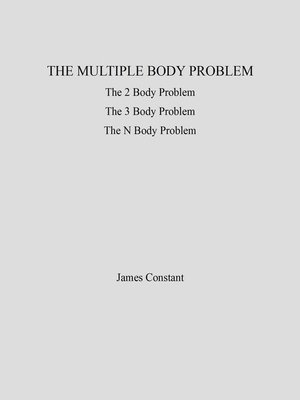
Sign up to save your library
With an OverDrive account, you can save your favorite libraries for at-a-glance information about availability. Find out more about OverDrive accounts.
Find this title in Libby, the library reading app by OverDrive.



Search for a digital library with this title
Title found at these libraries:
| Library Name | Distance |
|---|---|
| Loading... |
Kepler published in 1609 his empirical laws of planetary motions about the Sun. Kepler's first law says that each planet (or comet) moves on a conic with the Sun as its focus. Newton published in 1687 solutions, called orbits, which have each object moving in a circle, ellipse, parabola or hyperbola thus expanding Kepler's observations. In Newton's solutions two bodies move on two separate conics. These conics each with a focus, orbit about the center of mass (barycenter) of the two bodies. Unlike Newton's exact formulas predicting 2 body motions, mathematicians have been unable to find exact formulas predicting N>2 body orbits. However, some insights can be obtained by adding N>2 mass to the binary system. Since adding mass does not disturb a binary system, it appears that we can proceed by stringing beads of binary systems. In a new figure with a string of N binary systems, the motion is now between the new mass and the previous barycentric masses. In such case the orbit of previous barycentric masses shrinks to a point at the barycenter.







